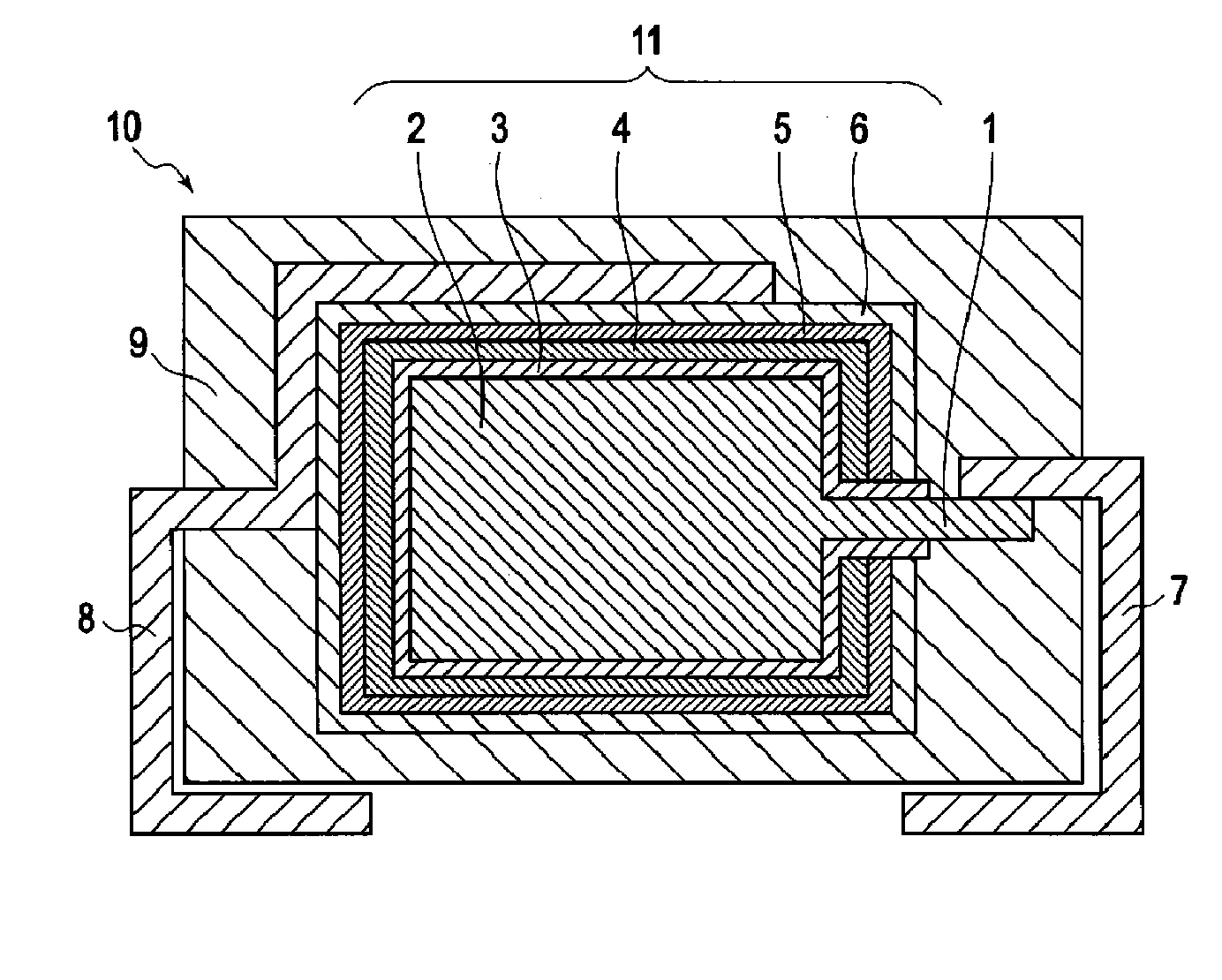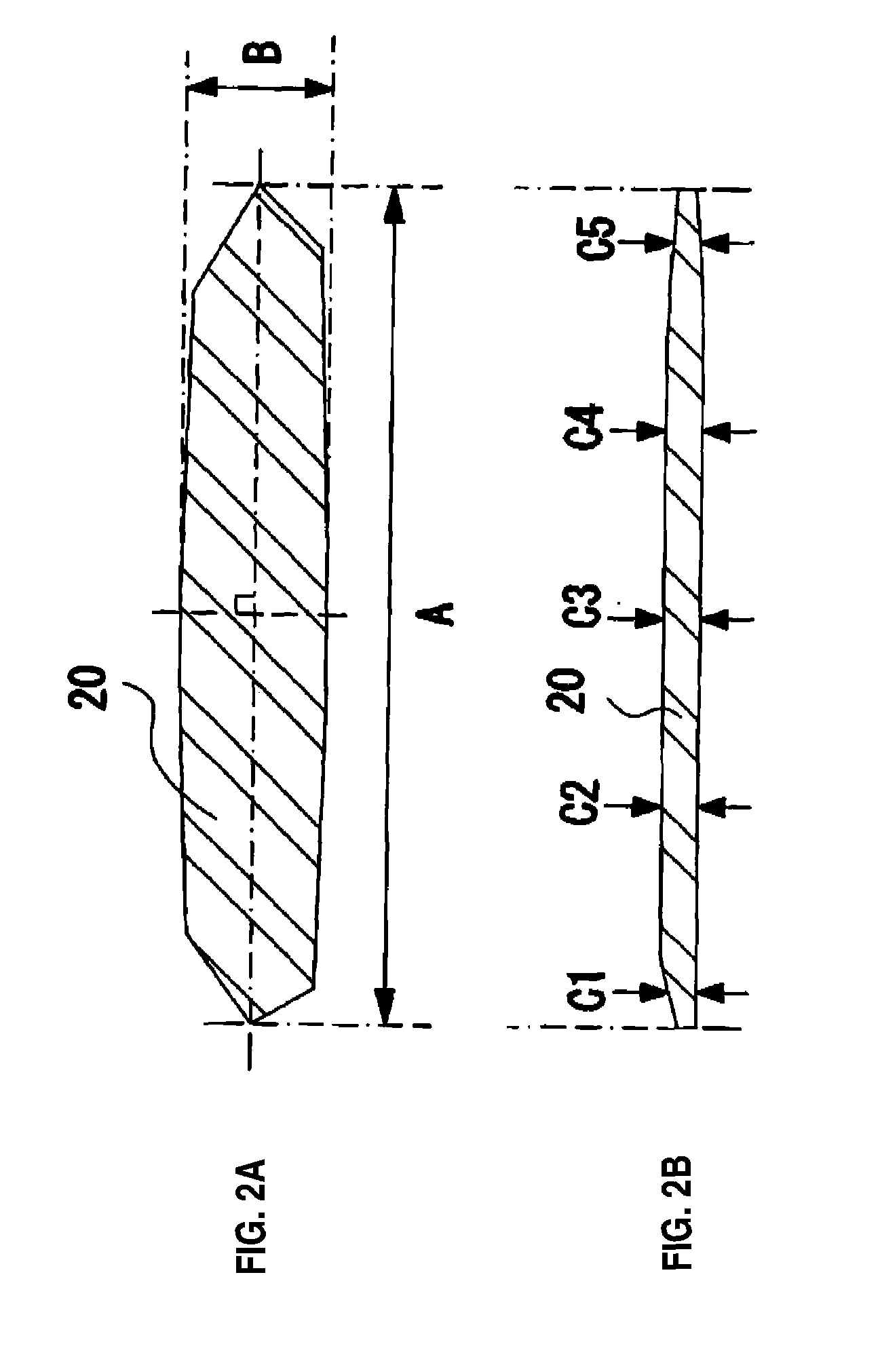Solid electrolytic capacitor
a technology of electrolytic capacitors and solids, applied in the direction of electrolytic capacitors, electrical equipment, capacitors, etc., can solve the problems of insufficient reduction of esr, damage to carbon fiber itself, inability to reduce esr, etc., and achieve the effect of reducing the resistance value and avoiding the deformation of the conducting polymer layer
- Summary
- Abstract
- Description
- Claims
- Application Information
AI Technical Summary
Benefits of technology
Problems solved by technology
Method used
Image
Examples
example
[0046]A solid electrolytic capacitor according to the invention will be described below by specific examples. However, the invention is not limited to the following examples.
(Preliminary Experiment)
[0047]A chemical polymerization solution is prepared by dissolving 10 weight % of pyrrole as a polymerizable monomer and 16 weight % of para-toluene sulfonic acid iron (III) as a dopant / oxidizing agent in a mixed solvent of ethanol and water with a volume ratio of 5 to 1. Then, 7.5 weight % of a flake-form silver filler, as a metal-based conductive filler, with a mean flake diameter of 10 μm and a mean aspect ratio of 50 is uniformly mixed in this chemical polymerization solution. Thereafter, a glass substrate is soaked in and taken out from the chemical polymerization solution. This glass substrate is left in the atmosphere for two hours. Thereby, a conducting polymer film with a thickness of approximately 100 μm is formed on the glass substrate.
[0048]After that, the conducting polymer f...
experiment 1
(Experiment 1)
Example 1
[0049]A tantalum powder with a mean particle diameter of approximately 2 μm is formed in a substantially plate-shape on anode lead wire 1 formed of tantalum so as to cover one portion of anode lead wire 1, and then is sintered in vacuum to form anode 2. Subsequently, anode 2 is anodized at a specific voltage of approximately 8 V for 10 hours in a phosphoric acid solution with a concentration of approximately 0.1 weight % and at a temperature being kept at approximately 60° C. Thereby, dielectric layer 3 formed of tantalum oxide is formed so as to surround the circumference of anode 2.
[0050]Next, a chemical polymerization solution is prepared by dissolving 10 weight % of pyrrole as a polymerizable monomer and 16 weight % of para-toluene sulfonic acid iron (III) as a dopant / oxidizing agent in a mixed solvent of ethanol and water with a volume ratio of 5 to 1. Then, 5 weight % of a flake-form silver filler, as a metal-based conductive filler, with a mean flake di...
example 2
[0052]As a metal-based conductive filler, a solid electrolytic capacitor is manufactured in a similar manner as that of example 1, except that a fiber-form copper filler with a mean fiber diameter of 0.5 μm and a mean fiber length of 30 μm is used.
PUM
| Property | Measurement | Unit |
|---|---|---|
| diameter | aaaaa | aaaaa |
| diameter | aaaaa | aaaaa |
| diameter | aaaaa | aaaaa |
Abstract
Description
Claims
Application Information
 Login to View More
Login to View More - R&D
- Intellectual Property
- Life Sciences
- Materials
- Tech Scout
- Unparalleled Data Quality
- Higher Quality Content
- 60% Fewer Hallucinations
Browse by: Latest US Patents, China's latest patents, Technical Efficacy Thesaurus, Application Domain, Technology Topic, Popular Technical Reports.
© 2025 PatSnap. All rights reserved.Legal|Privacy policy|Modern Slavery Act Transparency Statement|Sitemap|About US| Contact US: help@patsnap.com



